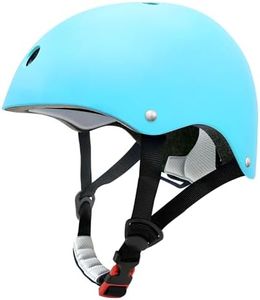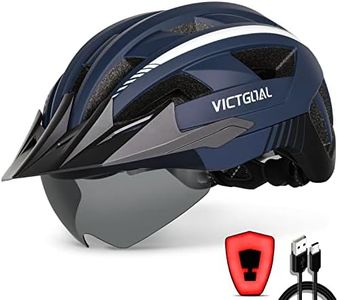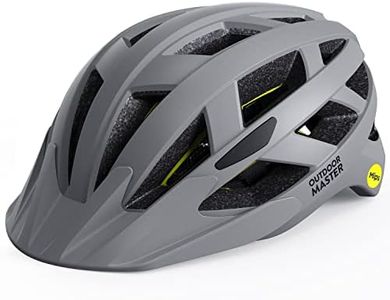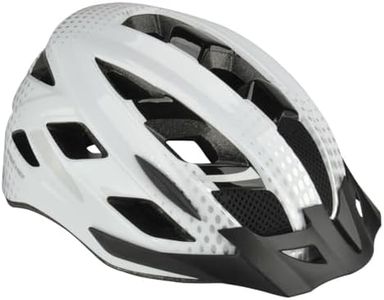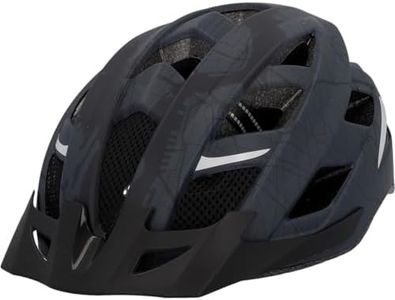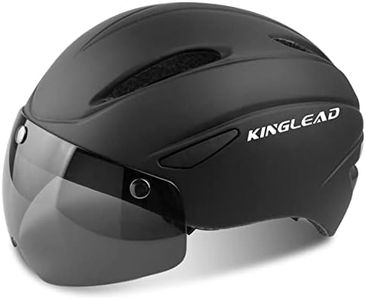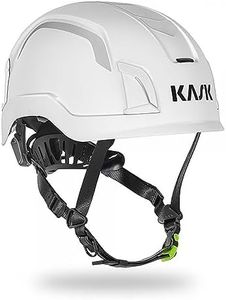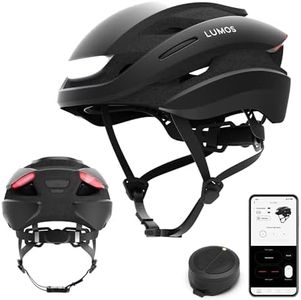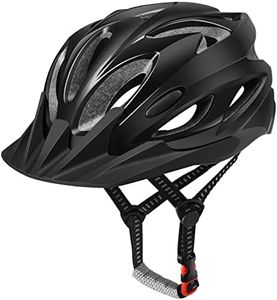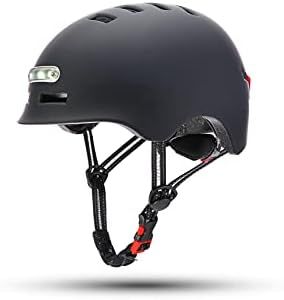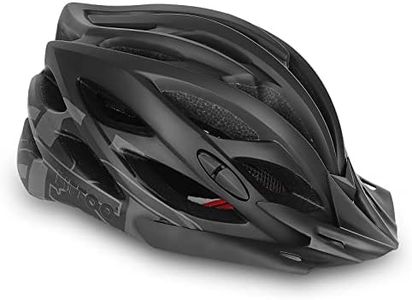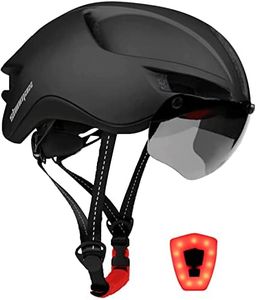We Use CookiesWe use cookies to enhance the security, performance,
functionality and for analytical and promotional activities. By continuing to browse this site you
are agreeing to our privacy policy
10 Best Bike Helmets
From leading brands and best sellers available on the web.Buying Guide for the Best Bike Helmets
Choosing the right bike helmet is important for your safety and comfort while riding. A good helmet not only protects you in case of a fall but should also fit well and feel comfortable during your rides. Before making your decision, think about how you plan to use your helmet—whether you're cycling on roads, mountain trails, or just casually around town. Pay attention to how the helmet sits on your head and consider the conditions you'll often ride in, like weather or commute length. Always ensure that the helmet is certified for safety standards.Size and FitSize and fit refer to how well the helmet matches the shape and size of your head. A good fit is crucial because a loose helmet may not protect you properly in an accident, while a tight helmet can be uncomfortable and distracting. Helmets are usually available in several sizes, and many offer adjustment systems to help tailor the fit. To pick the right size, measure the circumference of your head just above your eyebrows and use sizing guides. Try helmets on if possible and make sure the helmet sits level and snug without causing discomfort. Choose the fit that feels secure but not tight, aligning with your head shape and comfort needs.
Safety CertificationSafety certification means that the helmet has been tested and meets certain safety standards set by organizations. This is very important because it ensures the helmet provides a basic level of protection. Look for labels from recognized safety organizations; the exact certification may vary by country but is your guarantee that the helmet has passed impact tests. When choosing, always pick a helmet that carries up-to-date safety certification, especially if you plan to ride in traffic or at higher speeds.
VentilationVentilation refers to the number and placement of vents in the helmet, which help to keep your head cool during a ride. Helmets with more vents generally offer better airflow, which can be important if you ride in hot weather or do intense cycling. On the other hand, fewer vents can make a helmet warmer but might be suitable for cold climates or short trips. Think about how much you sweat or the type of riding you do to choose the right amount of ventilation—commuters or casual riders may not need as many vents as road cyclists or mountain bikers.
WeightWeight refers to how heavy the helmet feels on your head. A lighter helmet will generally be more comfortable on longer rides, especially if you ride for hours or compete. Heavier helmets might offer extra features or more protection but can cause neck fatigue over time. If you spend a lot of time biking, or if comfort is a big priority, look for a lighter option. For short, occasional rides, weight may be less of a concern.
Retention SystemThe retention system is the way the helmet fastens and adjusts to stay secure on your head, often using a dial or straps. A reliable retention system keeps the helmet stable and further customizes the fit. Some systems are easy to adjust with one hand, while others may need more effort. If you want convenience and plan to adjust your helmet often, look for a helmet that allows for quick and easy fit adjustments. Make sure you understand how the system works before buying.
Shell Material and ConstructionShell material and construction refer to what the helmet is made from and how the outer shell, inner foam, and other reinforcement features are combined. Most helmets use a hard plastic outer shell and energy-absorbing foam inside. Advanced construction methods may offer greater impact resistance or lighter weight. For regular city riding, basic shell materials are usually sufficient, but if you do more extreme cycling, like mountain biking, you may want to consider helmets with reinforced construction for extra protection.
MIPS or Similar Impact TechnologySome helmets include special technology like MIPS (Multi-directional Impact Protection System) or similar systems designed to reduce brain injury risk from rotational forces in certain crashes. This can provide additional safety beyond standard certification. If you are especially concerned about protection or ride in areas with higher risk of falls, consider a helmet with this feature. However, it's not essential for everyone, so weigh this against your riding habits and comfort preferences.
